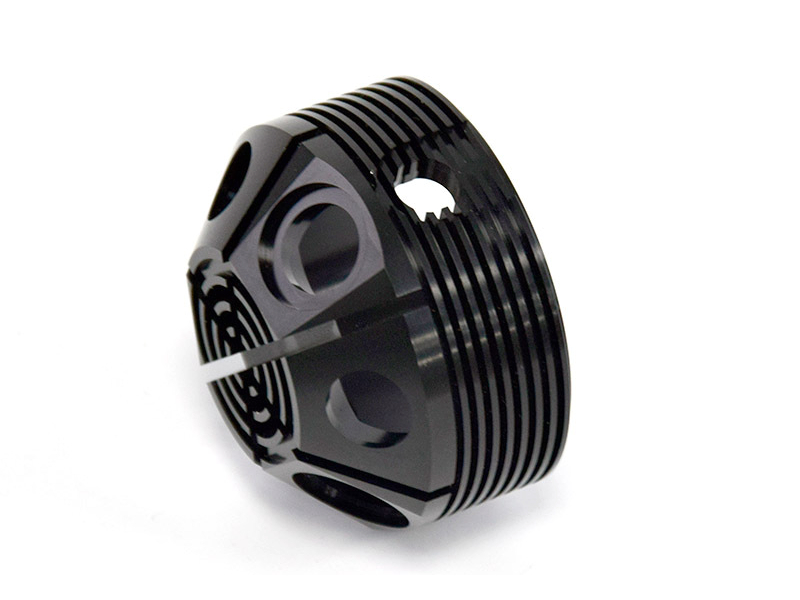Optimizing CNC Milling Processes for Aluminum Components in Robotics
Introduction
In modern robotics manufacturing, precision, lightweight design, and durability are fundamental to performance and efficiency. CNC milling of aluminum components offers exceptional advantages, meeting the stringent demands of robotic systems. Aluminum's favorable properties, including excellent machinability, strength-to-weight ratio, and corrosion resistance, make it ideal for complex, precision-engineered robotics parts. Effective CNC milling processes optimize production accuracy, reduce manufacturing time, and improve the overall reliability of robotic components.
Our company specializes in advanced CNC milling technologies tailored specifically for aluminum, enhancing robotics applications. We achieve superior dimensional precision, intricate detailing, and robust structural integrity by applying rigorous machining standards and leveraging state-of-the-art multi-axis machining machines. These optimized CNC milling processes ensure aluminum robotics components are produced efficiently, accurately, and cost-effectively, supporting continuous innovation in robotics design and functionality.
Available Machining Process
Our CNC milling capabilities for aluminum robotics components include:
3-Axis Milling: Efficient for simpler geometries and prototype development.
4-Axis Milling: Enhances machining efficiency by enabling rotational access to multiple sides.
5-Axis Milling: Delivers high complexity and intricate designs, crucial for precise robotic parts.
High-Speed Machining (HSM): Reduces cycle time, improves surface finishes, and enhances precision.
Typical Aluminum Alloy Overview
Several aluminum alloys are prominent in robotics due to their unique properties:
Aluminum 6061: This versatile alloy features magnesium and silicon, offering excellent mechanical properties, high machinability, and good weldability. Widely used for structural robotics components, its yield strength typically ranges around 276 MPa, with a tensile strength of around 310 MPa, making it suitable for robust frameworks.
Aluminum 7075: An aerospace-grade alloy with zinc as its primary alloying element, Aluminum 7075 provides superior strength (tensile strength around 570 MPa) and fatigue resistance, critical for load-bearing robotic components subject to high mechanical stresses. Its enhanced durability makes it suitable for demanding robotic applications requiring precise, resilient components.
Aluminum 5052: Renowned for its high corrosion resistance, formability, and good weldability, Aluminum 5052 is typically used for sheet metal parts in robotic enclosures or covers. Its moderate strength and ease of fabrication facilitate efficient production, particularly for components exposed to harsh environments.
Selecting the correct aluminum alloy ensures that robotic components effectively fulfill their intended mechanical, environmental, and functional requirements.
CNC Machinability of Aluminum Alloy
Due to their inherent machinability attributes, aluminum alloys are highly favored in CNC machining for robotics components. Compared to harder metals such as carbon steel or titanium, aluminum allows faster machining speeds and feeds, significantly reducing production cycle times and tool wear. Aluminum’s high thermal conductivity efficiently dissipates heat during machining, minimizing thermal distortion and preserving dimensional accuracy.
Alloy-specific machinability is another consideration. For example, Aluminum 6061 and 7075 exhibit excellent machinability ratings, facilitating efficient milling and precise feature creation. However, the presence of alloying elements, such as zinc in 7075, can influence cutting parameters due to increased hardness and potential tool wear.
Effective aluminum CNC machining requires carefully selected tooling, optimized cutting conditions, and appropriate coolant management. Carbide or diamond-coated tools are typically preferred for their hardness and wear resistance, enabling consistent quality outcomes and extended tool lifespan.
Considerations In Aluminum CNC Machining
Achieving optimal results when machining aluminum components for robotics demands consideration of multiple critical factors:
Tooling Selection: Utilizing carbide or polycrystalline diamond (PCD) tooling minimizes tool wear and maximizes surface finish quality. Tool geometries optimized for aluminum machining reduce cutting forces and enhance material removal rates.
Machining Parameters: Precisely managing cutting speeds, feeds, and depths of cut is essential. Higher spindle speeds (often 10,000 to 20,000 RPM) and moderate feed rates enhance productivity and reduce machining times.
Coolant Application: Effective cooling strategies, including flood coolant or high-pressure coolant systems, dissipate heat rapidly, minimize thermal deformation, and extend tool life. Proper coolant management is critical to maintaining machining accuracy and improving part finishes.
Workpiece Clamping: Stable and rigid clamping ensures accurate, repeatable machining operations. This is particularly crucial for thin-walled or delicate aluminum robotics parts susceptible to deformation or vibration-induced inaccuracies.
Surface Treatment for Aluminum Parts
Surface treatments significantly enhance the durability, performance, and aesthetics of aluminum robotics components:
Anodizing: Electrochemical anodizing increases surface hardness, improves corrosion resistance, and allows color-coding, which is essential for robotics component identification. Depending on application requirements, anodizing thickness typically ranges from 5 to 25 microns.
Powder Coating: This electrostatic process applies durable polymer-based coatings, providing excellent protection against wear, impact, and environmental factors. It enhances aesthetics and component visibility, especially in user-interfacing robotic applications.
Electroless Nickel Plating: Offers uniform surface deposition enhancing corrosion resistance and wear characteristics. This process benefits robotic components requiring high precision and minimal dimensional changes.
Bead Blasting: Provides uniform matte finishes, removing machining marks and burrs. Bead blasting improves the visual appeal and provides consistent surface texture, which is important for robotics aesthetics and handling.
Applications in Robotics
CNC-machined aluminum components are widely applied in diverse robotics sectors, including:
Robot Arm Assemblies: Aluminum provides lightweight strength for high-speed and precision robotic arms, enhancing maneuverability and reducing power consumption.
Chassis and Frameworks: Robotics chassis require robust, lightweight structural integrity, achievable through aluminum machining, ensuring operational efficiency and mobility.
End-of-Arm Tooling (EOAT): Lightweight, precisely machined aluminum EOAT enhances accuracy and agility in automated manufacturing systems, reducing cycle times and increasing throughput.
Sensor and Electronic Housings: Aluminum's thermal conductivity effectively dissipates heat from electronics, which is critical for maintaining optimal sensor accuracy and functionality.
Advantages and Limitations
Advantages:
Superior strength-to-weight ratio improves robot efficiency and payload capacity.
Excellent machinability accelerates production cycles.
Corrosion resistance reduces maintenance requirements and prolongs lifespan.
Versatility in achieving complex geometries and precise tolerances.
Limitations:
Lower hardness compared to steel or titanium limits wear resistance.
Susceptible to deformation if improperly machined or inadequately supported.
May require specialized surface treatments for enhanced environmental resistance.
FAQs
What aluminum alloys are ideal for robotics CNC milling?
How does aluminum CNC machining benefit robotics manufacturing?
What surface treatments significantly enhance aluminum robotics components?
What critical factors influence successful aluminum CNC machining?
How do CNC machining parameters vary for different aluminum alloys?

